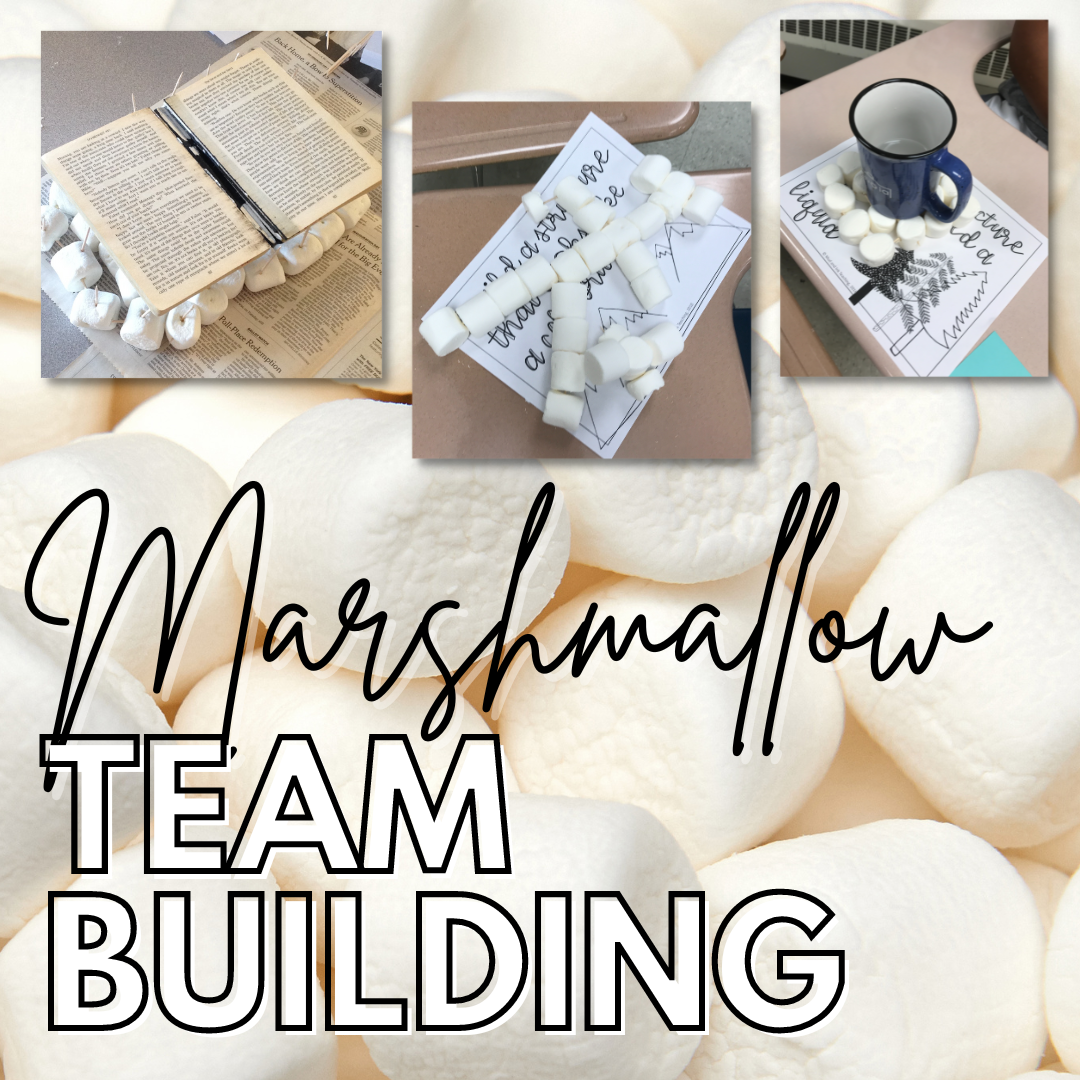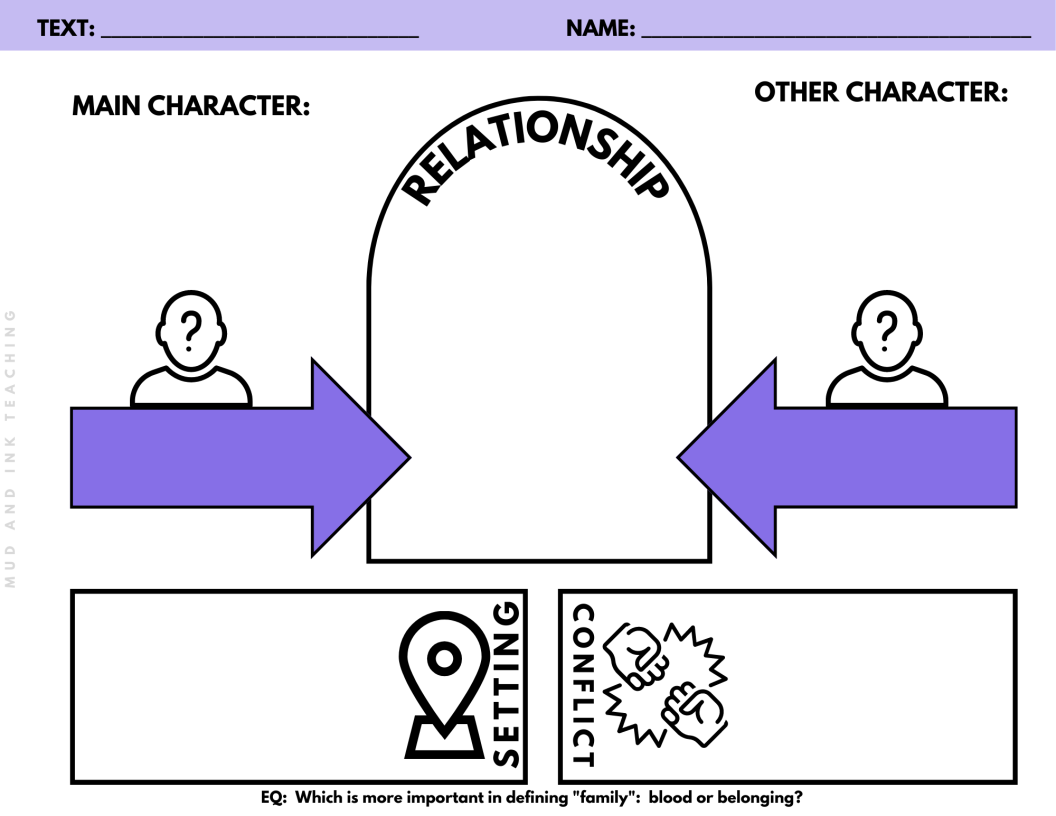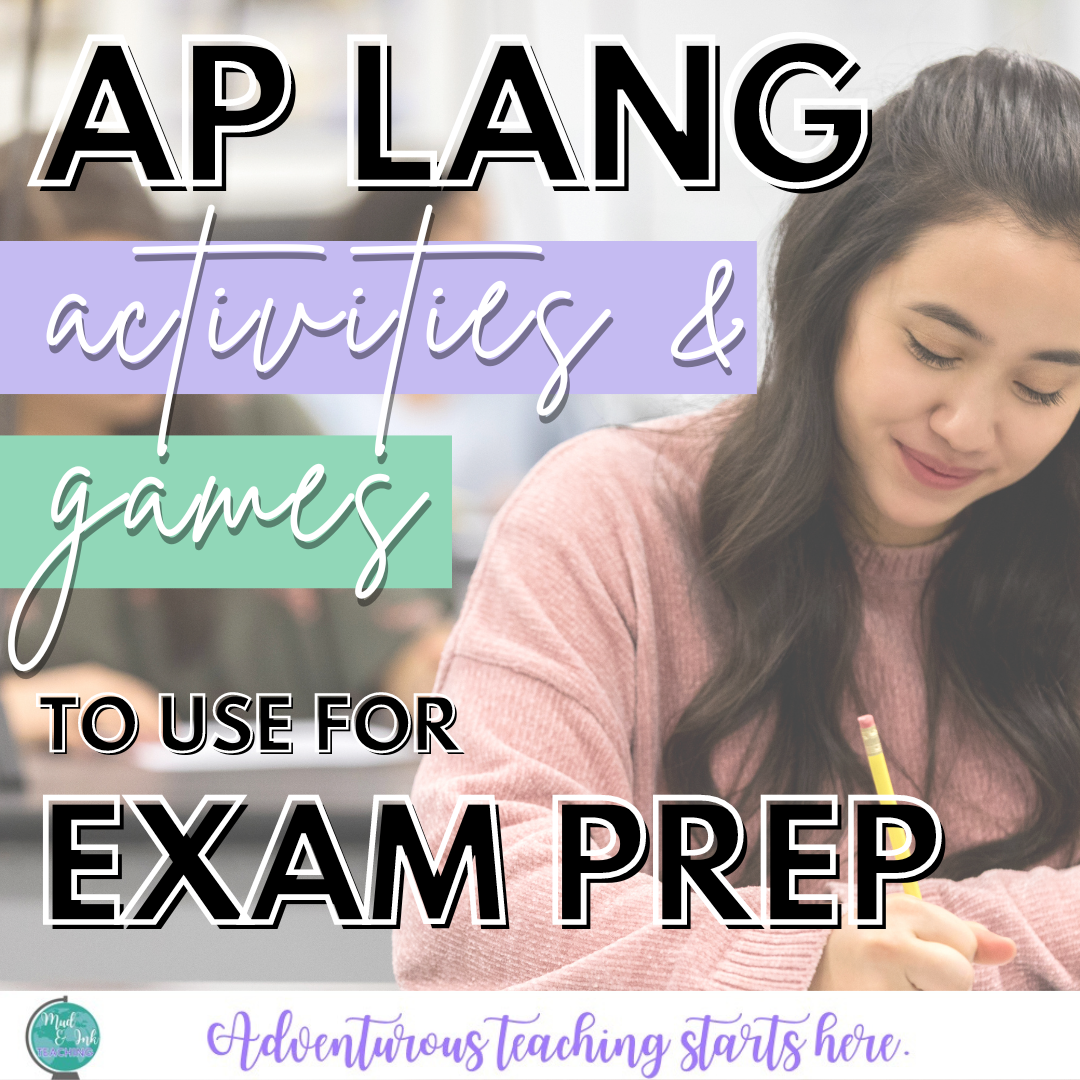First Day of School Lesson Plan for High School English: Setting the Tone
Twelve bags of marshmallows and two boxes of toothpicks.
Every year around August 15th, that’s what I’m walking out of the grocery store with in my bags. I remember one time I decided I didn’t need a cart -- I’ve got long arms, but let’s just say whoever saw me at Meijer on 11pm the night before school started that year probably had a pretty hilarious story to tell later.
One year, I had a teacher tell me that she took the LAST bags of marshmallows off the shelves of her local grocery store and heard a little voice behind her say, “Mommy, there’s no more marshmallows for our campfire!”. Oops.
Here’s what we need to remember: the first day of class is the first chance to make an impression, to set a tone, and to signal to students the kind of atmosphere they can expect walking through your doors every day for third period. Once you know what you want your room to feel like and you can describe the kind of experience it will be for the learners in your room, it doesn’t matter WHAT you choose to do on the first day of school as long as it hits everything on your list. Here are my two biggest goals for my classroom environment:
Voice matters — not just mine, but everyone’s. That includes using words that uplift one another and support the vulnerability it takes to grow as a learner, using our silence so that the voices of others can be heard, and using our words to grow into stronger communicators every day by practicing academic language and new vocabulary.
Decenter the teacher, decenter the text — A collective, vested community of genuinely curious and excited learners comes first. When I center questions and critical thinking, everything else follows right behind.
From here, we build. I go into a much more cohesive list and a reflection exercise for teachers over in my course: The First 10 Days. Here, we work side by side to develop your own goals for the year, classroom environment expectations, and so much more. This is your chance to learn from my many failures and take home exactly what I know will work so that you don’t have to waste your time wondering what will actually make you successful.
MARSHMALLOW TEAM BUILDING
On the first day of school, I have tried so many different activities, but I finally settled on my unicorn: Marshmallow Team Building. This is the activity I’ve been doing for countless years. There are many different variations on the activity, so whichever version you choose, you should be looking to get these things out of it:
Establish a classroom atmosphere of TEAMWORK: for the entire period, I only speak two or three times. When they ask questions, I simply point back at their group. From day one, my students know that here in this classroom, they’ll be solving problems together, not just asking me for answers.
It forces me to LISTEN. Since I’m not talking, I’m watching and listening intently. I’m getting a read on the room - who is stepping up to lead? Who is presenting creative ideas? Who is cooperating? Who is...not cooperating?
It makes kids smile. This is just plain FUN. No one expects to walk into their English class on the first day and be handed marshmallows and toothpicks!
THE LESSON PLAN
Let’s get you ready to tackle the first day of school with this layered and powerful activity. I have the whole thing laid out for you here to print-and-go, but if you’re looking for a bit more information, here is how the lesson usually goes:
PREPARE:
Presort your students into groups. My room is set up in tables, so I just create a seating chart ahead of time so students know where to sit.
Prevent messes: I usually put down some butcher paper or wax paper where the students will do their building.
Number the chairs in the room. It makes assigning seats so quick and easy!
TEACH:
Greet your students at the door with a big smile and a handshake or hi-five. It may sound silly, but this is a critical moment to make a first (and lasting) impression on your students. I ask them for their name, find it on my seating chart, and send them to their numbered seat.
When students walk in, they find their numbered seat and can see a single Google Slide at the front of the room. The slide usually says welcome, take a seat, and has a teamwork-related quote.
When class starts, greet them again. Do attendance again. Make an effort to learn names right away. As soon as that’s done, give them their directions
The directions are as follows:
You will have 10 minutes to complete the challenge that you are handed.
You should work together as a team with each member contributing his or her ideas.
When you think you’ve completed the challenge, raise your hands and I will come over to judge your work.
You must use ALL of the materials provided - no items can be left out!
I cannot help you at all during the time limit.
Your goal is to complete the challenge before the time is up!
Set the timer and let them get started!
FOLLOW UP:
From an informal debrief to a more formal written reflection, bring everyone back together again. It’s important to let the students share what they learned about themselves, wonder aloud about why on earth this was the activity their teacher chose for the first day of school, and to discuss how their teams worked together.
Like I stated earlier, there are SO MANY different ways to set up this lesson. My first day of school class period is usually only 18 minutes long, so we get in, get messy, and then they leave. And when they leave, I know that I’ve created a memory for them. I’ve created a memory that gives them an idea of what to expect for every day moving forward in my room:
Expect the unexpected
Take chances
You are valued; you are CENTER
Learning is messy
Things will be hard, but we’ll work together and have fun, too
For an entire in-depth walk through of my first ten days of school , I hope you’ll join me over in my course where you’ll have lifetime access to updates and materials. I hope you have the BEST school year yet and let me know how this activity goes for your students!
My co-host Marie Morris and I discuss this season of teaching at length on our podcast Brave New Teaching. This episode is a great place to start if you’re ready to dig deeper into the philosophical things you are thinking about as you’re starting a brand new school year. Join us!























